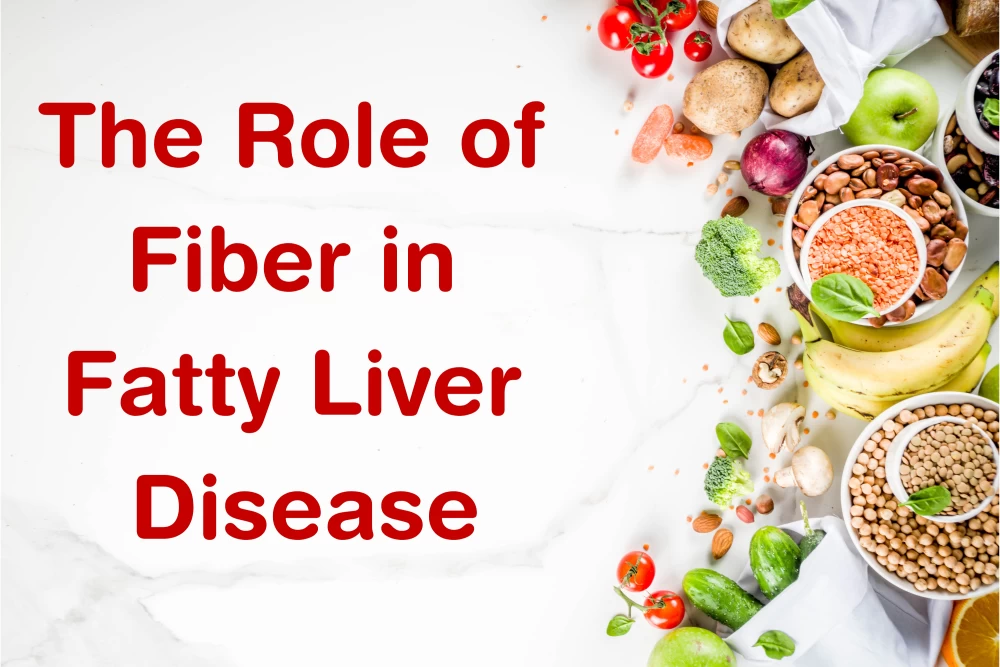
- 21st March 2023
Table of Contents
Fatty Liver Disease
Fatty liver disease is a condition characterized by the buildup of fat in the liver. It can be caused by a variety of factors such as obesity, high cholesterol levels, and excessive alcohol intake. To combat this condition, lifestyle changes such as diet modification are essential. Fiber has been shown to play an important role in managing fatty liver disease. Fiber helps regulate blood sugar levels which can be beneficial for those with fatty liver disease because they often have insulin resistance. This means that their bodies cannot properly use insulin to regulate glucose levels which can lead to high blood sugar levels and an accumulation of fat in the liver. In addition, fiber promotes healthy bowel movements which can help reduce inflammation in the body. Inflammatory markers are often elevated in individuals with fatty liver disease so reducing inflammation through increased fiber intake may be helpful in managing symptoms associated with this condition. Overall, incorporating more fiber-rich foods such as fruits, vegetables, whole grains and legumes into one's diet may be beneficial for those suffering from fatty liver disease.
Definition: What is Fatty Liver Disease?
Fatty liver disease, also known as hepatic steatosis, is a condition where there is an accumulation of fat in the liver cells. This buildup of fat can lead to inflammation and damage to the liver, potentially causing long-term health problems. There are two types of fatty liver disease: alcoholic fatty liver disease (caused by excessive alcohol consumption) and non-alcoholic fatty liver disease (caused by other factors such as obesity, diabetes or high cholesterol). Non-alcoholic fatty liver disease is becoming increasingly common due to rising obesity rates worldwide. The role of fiber in preventing and managing fatty liver disease has been widely studied. Fiber is a type of carbohydrate that cannot be digested by humans but plays an important role in maintaining gut health and regulating blood sugar levels. Consuming a diet high in fiber has been shown to reduce the risk of developing non-alcoholic fatty liver disease as well as improving symptoms for those who already have the condition. This is because fiber helps slow down the absorption of sugar from food into the bloodstream, reducing insulin resistance and thus decreasing fat accumulation in the liver. Foods high in fiber include whole grains, fruits, vegetables, legumes and nuts.
Causes: What Causes FLD?
Fatty liver disease (FLD) is a condition that occurs when there is an excessive accumulation of fat in the liver. The liver is responsible for processing and filtering toxins from the body, but when it becomes overwhelmed with fat deposits, it can no longer function properly. There are several causes of FLD, including obesity, type 2 diabetes, high cholesterol levels, and metabolic disorders. One factor that may contribute to the development of FLD is a lack of dietary fiber. Fiber plays an important role in digestion and helps to regulate blood sugar levels by slowing down the absorption of carbohydrates. When there is a deficiency of fiber in the diet, the body may be more prone to developing insulin resistance and metabolic syndrome – two conditions that are commonly associated with FLD. To prevent or manage FLD, it's essential to incorporate plenty of fiber-rich foods into your diet. This includes whole grains such as oats and barley, fruits like apples and berries, vegetables such as broccoli and carrots, legumes like beans and lentils, nuts including almonds and walnuts among others. By making these dietary changes alongwith other lifestyle modifications such as regular exercise you can help protect your liver health over time.
Symptoms: What are the Signs?

Fatty liver disease is a common condition caused by the accumulation of fat in the liver cells. It can be classified into two types: alcoholic fatty liver disease and non-alcoholic fatty liver disease (NAFLD). The symptoms of NAFLD are often silent, making it challenging to diagnose without proper medical testing. Some of the most common signs of NAFLD include fatigue, weakness, appetite loss or weight loss, abdominal discomfort or pain, and yellowing of the skin and eyes. Individuals with this condition may also experience swelling in their legs and ankles or have dark urine. These symptoms can vary from person to person and may not be present until significant damage has already occurred. Fiber plays an important role in managing NAFLD as it helps regulate digestion by breaking down fats and aiding in their elimination from the body. Incorporating fiber-rich foods like whole grains, fruits, vegetables, nuts, and seeds into your diet can help prevent further damage to your liver cells while improving overall health. It's essential to speak with a healthcare professional if you're experiencing any symptoms associated with NAFLD for proper diagnosis and treatment.
Fiber's Role: How Does Fiber Help?
Fiber plays a crucial role in maintaining liver health, especially when it comes to fatty liver disease. Medical professionals recommend patients with this condition consume a high-fiber diet to reduce the risk of complications and improve their overall health. Fiber works by promoting satiety, reducing inflammation, and regulating blood sugar levels in the body. One of the primary benefits of fiber is its ability to promote satiety, or feelings of fullness after eating. This is crucial for those with fatty liver disease because it can help them avoid overeating and consuming excessive amounts of calories that could further exacerbate their condition. Additionally, fiber can help regulate bowel movements and prevent constipation, which is often a side effect of fatty liver disease. Furthermore, research has shown that fiber can also reduce inflammation throughout the body. Inflammation is known to play a significant role in many chronic diseases, including fatty liver disease, so incorporating foods high in fiber into one's diet may be an effective way to reduce inflammation levels and prevent further damage to the liver. Overall, adequate fiber intake through whole grains, fruits, vegetables and legumes are key components in treating or preventing complications related to fatty liver disease.
High-Fiber Foods to Eat
Fatty liver disease is a condition that occurs when there is an accumulation of fat in the liver. This can lead to inflammation and scarring, which can ultimately result in liver damage. Studies have shown that increasing fiber intake may help reduce the risk of fatty liver disease. Fiber helps promote healthy digestion and can improve insulin sensitivity, both of which are important factors in preventing fatty liver disease. Some high-fiber foods to consider adding to your diet include: whole grains such as brown rice and quinoa, fruits like raspberries, pears, and apples, vegetables such as broccoli and sweet potatoes, nuts and seeds like almonds and chia seeds, and legumes including lentils and chickpeas. It's important to note that increasing fiber intake should be done gradually to avoid digestive discomfort or bloating. Overall, incorporating more high-fiber foods into your diet is a simple yet effective way to support liver health and prevent fatty liver disease. Not only does fiber have numerous health benefits beyond just liver health but it also helps keep you full for longer periods of time making it easier for you not overeat throughout the day!
Conclusion: Summary of Benefits
In conclusion, incorporating fiber-rich foods into one's diet can have numerous benefits for individuals with fatty liver disease. Firstly, fiber helps to lower insulin resistance and reduce inflammation in the liver, which are two key factors that contribute to the development of fatty liver disease. Secondly, high-fiber diets have been shown to improve cholesterol levels and promote weight loss, both of which are important for reducing the risk of developing complications associated with fatty liver disease. Moreover, consuming high-fiber diets has also been linked to a reduced risk of developing other chronic diseases such as heart disease and type 2 diabetes. This is because fiber helps regulate blood sugar levels and promotes healthy gut bacteria, which play a crucial role in overall health. Therefore, individuals with fatty liver disease can benefit not only from improvements in their liver health but also their overall well-being by incorporating more fiber into their diet. Overall, the inclusion of high-fiber foods like fruits, vegetables, whole grains and legumes into one's diet is an effective way to manage or prevent fatty liver disease. The various benefits that come with consuming more fiber make it an essential nutrient for anyone looking to improve their overall health and well-being.
